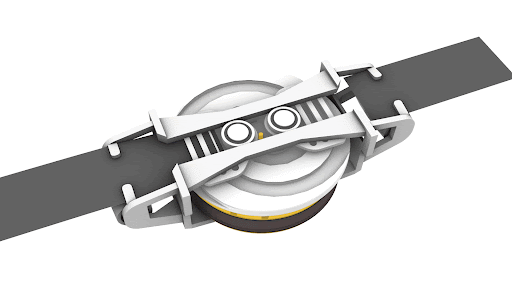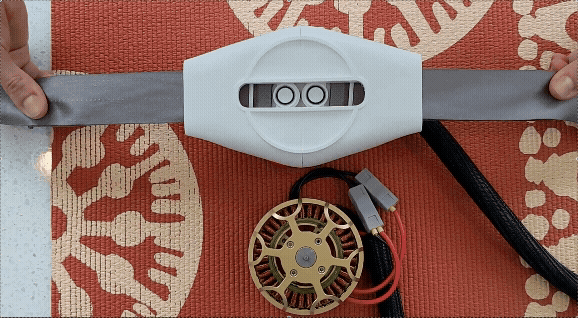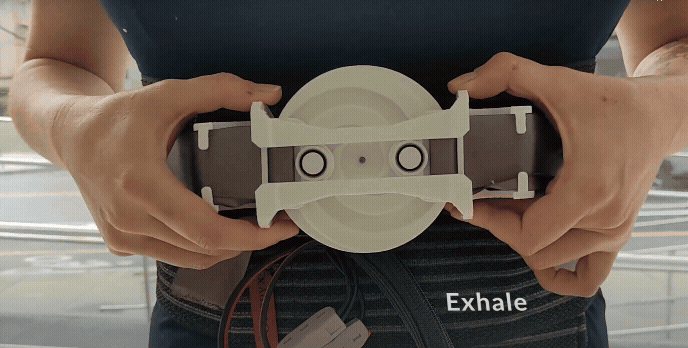top of page
inHale
A teletangible device for synchronized breathing.
Created at the MIT Media Lab (MAS.834 Tangible Interfaces) under the supervision of Professor Hiroshi Ishii.
Role
Designer, Researcher
Timeline
Nov 2021 - Dec 2021
Collaborators
Dana Gretton, Leandra Tejedor, Daniel Noh, Tatiana Baughman
Defining the Issue
A key aspect of the practice of yoga is the regulation of one's breath in order to obtain a greater sense of mind-body unity. When practiced in groups, yogis often synchronize breaths with one another to enhance this unity. In the era of covid, when the opportunities for in-person practices are greatly limited, such practices usually take place over Zoom. However, it is impossible to feel, see, and hear others' breaths over zoom.
We spoke with a couple of yoga instructors to understand this issue better.
In a yoga class, hearing other people's breath and listening to my own breath informs how well I am listening to my body's needs...Zoom is completely disconnected from that energy.
Yoga is centered around unity; we often find that connecting with other people helps us connect with ourselves. Feeling a group of people breathing together is a subtle yet very powerful way to feel connected.
Precedents
Before beginning to ideate and sketch, we researched related work to see which problems had been solved and what we could build off of. We found three wearable breathing devices:
Developed by Kyung Yun Choi, aSpire is a "clippable, mobile pneumatic-haptic device designed to help users regulate their breathing rate via subtle tactile feedback."
The stress releaZer is a handheld breathing trainer designed to relieve stress. Users hold the device to their chests to allow the vibrating motor to regulate their breathing.
Developed by Anmol Puranik, M. Kanthi, Anupama V. Nayak, this wearable monitors heart rate, posture, and breathing.
These tangibles provide innovative methods of tracking and projecting regulated breathing. However, none of them involve:
1) More than one user
2) Synchronous behaviors
3) Telecommunication
We also researched tangible devices that focus on synchrony:
This software provides a visual representation of choreography for dancers, enhancing unison.
These devices, developed at the MIT Media Lab, use forced -feedback haptic technology to create the illusion of synchronized touch.
The Concept
Based on our understanding of what technology exists and which problems have been solved, we developed our concept of a wearable device that expands and contracts to sync multiples users' breaths. Each device has a sensor that actuates the paired device based on the user's breath patterns.
Pictured below: Conceptual sketch of real-time synchrony and the actuating function of inHale .

From there, we designed a a wearable device that expands and contracts in tandem with the both users' breaths.

How it Works
When user A inhales, the device they are wearing senses the expansion of the diaphragm. User B's device will then expand and contract to mimic user A's breaths. The same works vice versa; user B's device will track their breathing and then project it via expansions and contractions of user A's device. Ultimately, users will have equal control over the rate of breathing.
The contraction and expansion of the device is illustrated in the gif below:

Building the Physical Prototype
We built the prototype using an Eaglepower 90KV Brushless Motor and an AMT10 Incremental Encoder. We used Onshape and Rhino3D to design and PLA 3D-print the remaining components.
We then used a Raspberry Pi and developed a server-based script to synchronize the inner motor and the encoder.





When worn around the torso, the device senses the expansion and contraction of the user's abdomen. The script returns the average rotational location of both devices.


The Final Prototype
After several rounds of prototyping, we presented a live demonstration of two users synchronizing their breathing while wearing inHale devices.


Takeaways
This was an exciting project for me, as it was my first real foray into physical prototyping. From working with hardware designing and printing 3D components, I was able to explore a new side of design.
While several unsuccessful attempts at physical prototyping caused frustration in the moment, I am grateful that my collaborators and I faced (and overcame) those challenges. As a recovering perfectionist, I appreciate any and all reminders that "failure" can only propel us further towards a solution.
bottom of page
.png)



